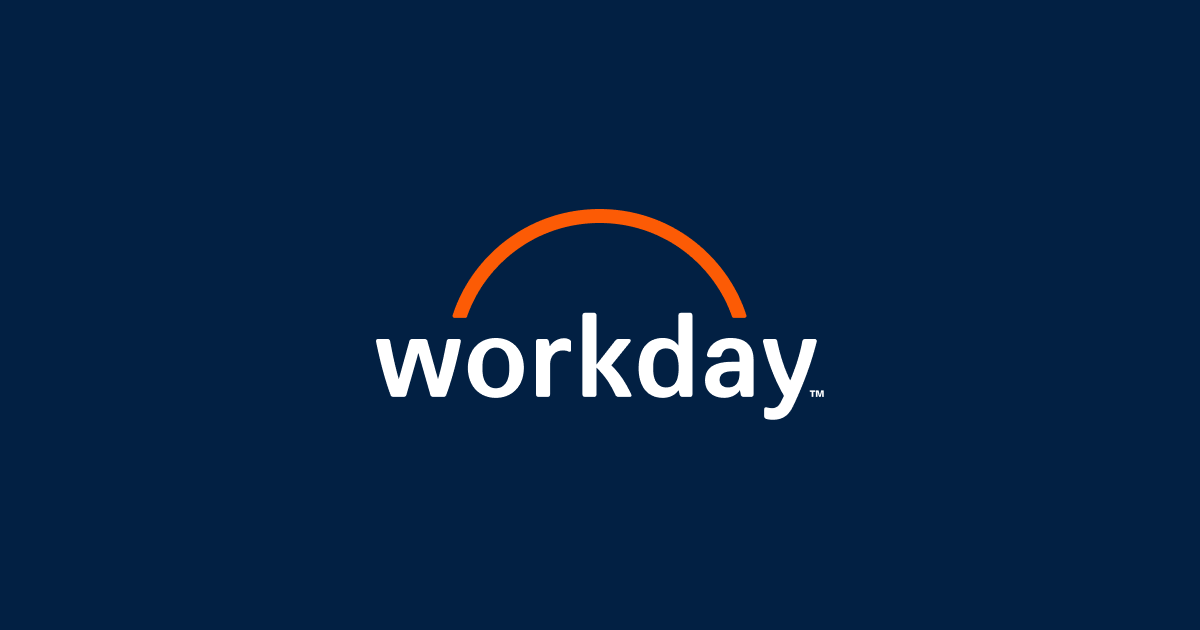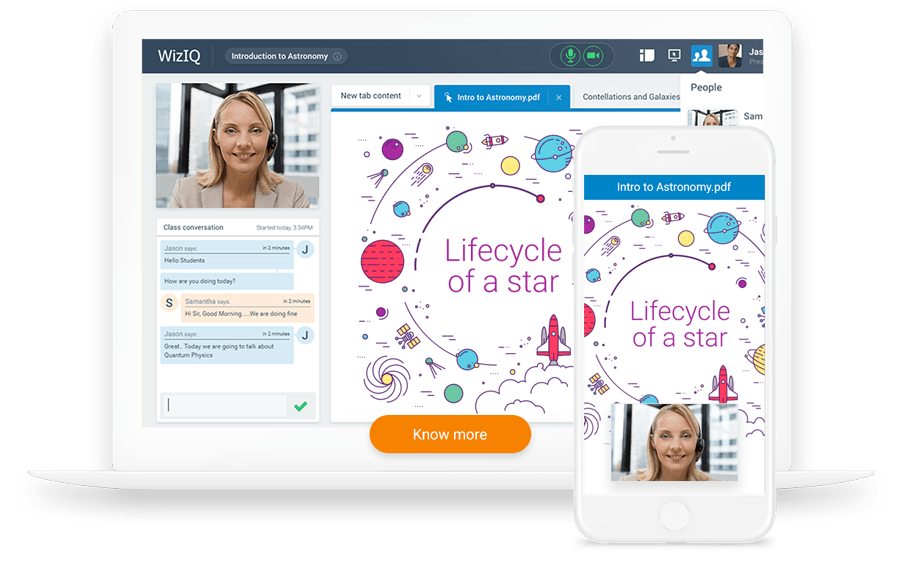Introduction
As online and blended learning continues to grow, more organizations are looking for robust and easy to use learning management systems (LMS) to power their digital education and training programs. An LMS acts as a centralized hub for disseminating courses, tracking progress and providing insights. In this blog, we evaluate 15 of the most popular LMS platforms currently available based on key criteria to help organizations shortlist the right solution.
Methods of Evaluation
To evaluate and rank the top 15 LMS platforms, we consider the following criteria: features and functionality, ease of use, engagement tools, mobile experience, course creation capabilities, integrations, pricing, support, reviews and ratings. We also leverage other metrics like number of backlinks, traffic and keyword search trends to understand a platform’s authority in the online learning space. This evaluation helps provide a balanced perspective across qualitative and quantitative parameters to identify the leaders in this industry.
1. Adobe Captivate Prime
Adobe Captivate Prime is a leading learning management system (LMS) and learning experience platform (LXP) from Adobe. With more than 25 years of experience delivering industry-leading creative software, Adobe brings its expertise in design and content authoring to the LMS and LXP space with Captivate Prime.
Pros: Some key advantages of Adobe Captivate Prime include: – Robust authoring tool to create interactive eLearning – Built-in virtual classroom and assessments – Highly customizable LXP platform for enterprises – Seamless content management workflow – Robust analytics and data capabilities
Cons: One potential disadvantage is that Adobe Captivate Prime is more suited for large enterprise customers due to its feature-richness and pricing. Smaller organizations may find it overly complex for their needs.
Pricing: Adobe Captivate Prime pricing starts at $40 per user per month for the basic plan. Additional features like single sign-on, custom branding, and advanced admin controls are available in the mid-range and enterprise plans that are customized based on the number of users and requirements.
Some key stats about Adobe Captivate Prime include: – Used by more than 5,000 companies worldwide – Supports over 1 million users – Offers 300+ integrated reporting templates – More than 30 out of box modules to customize the platform
2. Coursera
Coursera is one of the largest online learning platforms that offers courses from top universities and organizations globally. Founded in 2012, it has partnered with over 200 universities and industry partners to offer online courses across various subjects like Machine Learning, Data Science, Business, Computer Science and more.
Pros: Some key advantages of Coursera include:
– Large catalog of online courses from top universities globally
– Well-designed platform for taking MOOCs and learning online
– Issue credentials like certificates upon completion of courses
– Flexible learning with the option to learn at your own pace
Cons: One of the main disadvantages is the paid subscription required for earning a certificate or degree. While the core course content is freely available, assessments and credentials require a subscription.
Pricing: Coursera offers various subscription plans for learners –
– Free basic access to course videos and core contents
– Coursera Plus monthly subscription starting at $39/month for certificates
– University degrees starting at around $10k-$15k depending on the program
Some key stats about Coursera include:
– Over 100 million learners from across the world
– Over 6,000 courses available
– Courses from top institutions like Yale, Princeton, University of Michigan, etc.
– Over 3,000 hands-on programming and tech projects
– Issue credentials like certificates and degrees upon completion
3. Moodle
Moodle is an open-source learning management system (LMS) that has been in active development since 1999. It is one of the most widely used LMS in the world with over 100,000 sites registered worldwide. Moodle allows the creation of private online courses for educators and trainers to transfer knowledge and skills.
Pros: Some key advantages of Moodle include:
– Free and open-source meaning no licensing fees
– Highly customizable and configurable through plugins and themes
– Large active community for support, documentation and new feature development
– Mobile responsive design for on-the-go learning
– Comprehensive feature set including assessments, assignments, grading, reports etc.
Cons: One potential disadvantage of Moodle is that as an open-source project, it does not receive commercial support from a single vendor. Users need to rely on the community for support which can sometimes cause delays compared to commercial LMS offerings.
Pricing: Since Moodle is open-source, there are no licensing fees to use it. However, institutions may choose to purchase support packages from commercial providers for a fee to get priority support responses.
Some key stats about Moodle include:
– Used by over 200 million users worldwide
– Translated into over 110 languages
– Over 10 million downloads
– 24-7 support forums with 1 million+ members
– Constant updates and new features added regularly through community contributions
4. Edx
Edx is an American massive open online course provider created by Harvard and MIT. It offers online university-level courses in a wide range of disciplines including both physical and social sciences, to anyone around the world. Courses are delivered via interactive learning and assessment online.
Pros: Some key advantages of using Edx include:
– Access to world-class courses from top universities like Harvard, MIT at affordable prices
– Non-profit model means high-quality education is available to learners globally
– Flexible self-paced learning – study on your own time and schedule
– Options to earn professional certificates or even degrees online
Cons: One potential disadvantage is the lack of direct student support and interaction compared to traditional on-campus degree programs.
Pricing: Most Edx courses are available completely free of charge. For verified certificates demonstrating completion of a course, fees range from around $50 to $200 depending on the course.
Some key stats about Edx include:
– Over 31 million learners from around the world have used Edx to date
– Partners with over 140 top universities and organizations including Harvard, MIT, Berkeley, etc. to offer courses
– Offers over 3,800 courses across a wide range of topics
– Courses are available for free or for a fee to earn verified certificates
5. Canvas
Canvas by Instructure is one of the leading learning management systems (LMS) used by educational institutions worldwide. Some key facts about Canvas include that it serves over 100 million users across K-12, higher education, and enterprise sectors. It is used by schools, colleges, universities and organizations in over 70 countries.
Pros: Some key advantages of Canvas include:
– Very customizable and easy to use interface for both teachers and students
– Wide range of features for course creation, assignment management, collaboration tools, grading, and more
– Good support available through forums, tutorials and 24/7 phone and chat support
– Regular platform updates and new features added continuously based on customer feedback
Cons: One potential disadvantage is that the free basic plan has limited features and storage capacity, so institutions need to pay for the premium tiers to unlock the full capabilities.
Pricing: Canvas pricing starts from a free basic plan for individual educators. For institutions, pricing starts at:$68/teacher per year for the Pro plan (up to 500 users)$99/teacher per year for the Plus plan (500-2000 users)+ additional fees for premium features like single sign-on, extended storage etc.
Some key stats about Canvas include:
– Used by more than 3,000 institutions globally
– Serves over 100 million users worldwide
– Over 12 billion learning tools and assignments created each year on the platform
– Over 35,000 integrations available through the Canvas app center
6. Thinkific
Thinkific is a learning management system and online course platform that helps entrepreneurs, businesses, and organizations create, market, and sell online courses. Founded in 2012 and based in Ottawa, Canada, Thinkific provides a easy to use platform focused on empowering creators and instructors to build their online business.
Pros: Some of the key advantages of Thinkific include:
– Strong focus on creators and instructors with robust course builder and management tools
– Wide range of customization options for content, themes and branding
– Good integrations with popular ecommerce platforms like Shopify to sell courses
Cons: One potential disadvantage is that the free plan has limited capabilities and upgrading to a paid plan may be required for more advanced features and functionality.
Pricing: Thinkific offers several paid plans starting at $29 per month for their Basic plan up to $199 per month for their Premium plan. Paid plans unlock more features, higher storage limits, and enhanced support compared to the free starter plan.
Some key stats about Thinkific include:
– Over 30,000 active creators using the platform globally
– Over 500,000 students have enrolled in courses on Thinkific
– Integrations with leading tools like Paypal, Stripe and Shopify to process payments
7. Workday Learning
Workday Learning is Workday’s cloud-based learning management system (LMS). As part of Workday’s broader Human Capital Management (HCM) platform, Workday Learning seamlessly integrates with tools like Workday Recruiting, Workday HR, and Workday Financial Management. This deep integration allows companies to align learning and development initiatives with overall business goals and strategy.
Pros: Some key advantages of Workday Learning include: Seamless integration with broader Workday HCM suite allows learning insights to flow between applications like performance reviews. Personalized recommendations across systems based on goals, competencies and past learning. Analytics on learning initiatives and impact aligned with overall business strategy and objectives.
Cons: A potential disadvantage is that Workday Learning requires utilizing Workday’s broader HCM suite, so it may not be the best fit for companies solely looking for a stand-alone LMS. Switching costs could be higher compared to other LMS vendors since it involves replacing the whole HCM system versus just the LMS module.
Pricing: Workday Learning pricing is based on the overall Workday HCM subscription which starts at around $50-100 per user per month depending on the number of users and modules purchased. Compared to other leading LMS vendors, Workday tends to be on the higher end of pricing due to the integrated suite and additional functionality beyond just learning management.
Some key stats about Workday Learning include: Used by over 7,000 companies globally, with clients across industries like healthcare, manufacturing, finance, and more. Offers access to over 10,000 online courses covering topics like leadership development, compliance trainings, and technical skills. Has personalized recommendations engines that suggest relevant learning based on an individual’s role, goals, competencies and past learning history.
8. TalentLMS
TalentLMS is a leading cloud-based learning management system (LMS) for businesses, higher education institutions, and K-12 schools. Founded in 2011 and headquartered in Cluj-Napoca, Romania, TalentLMS helps over 8,000 companies and educational institutions deliver online training to their employees and students. With an elegant and intuitive interface, in-built analytics, and affordable pricing plans, TalentLMS is a top choice for organizations looking to move their training online.
Pros: Some key advantages of TalentLMS include:
– User-friendly design that is easy for both administrators and learners to use
– In-built analytics and engagement tools to track course and learner progress
– Affordable pricing for businesses of all sizes as well as K-12 schools
Cons: One potential disadvantage is that the free plan has limited features, so smaller organizations may need to upgrade to a paid plan to unlock more advanced functionality.
Pricing: TalentLMS offers several pricing plans starting from a free Basic plan for up to 50 users to Premium and Enterprise plans suitable for large organizations. Monthly pricing starts from $29/month for the Plus plan up to custom enterprise plans for very large companies.
Some key stats about TalentLMS include:
– Over 8,000 customers in more than 150 countries
– Processed over 100 million course completions
– Has 350+ built-in integrations including Learning Management Systems (LMS), CRM tools, APIs, and more
9. SAP SuccessFactors Learning
SAP SuccessFactors Learning is a learning management system (LMS) developed by SAP. It is part of the larger SAP SuccessFactors HCM suite and offers training, development, compliance and performance analytics capabilities.
Pros: Some key advantages of SAP SuccessFactors Learning include:
– Full-featured for comprehensive HR/talent needs as part of the larger SuccessFactors HCM suite
– Strong out-of-the-box integrations with other SAP solutions
– Scales well for large enterprise implementations
– Robust analytics and reporting on learning programs
Cons: A potential disadvantage is the higher cost of SAP SuccessFactors Learning compared to some other standalone LMS solutions due to it being part of the larger SAP SuccessFactors HCM suite.
Pricing: SAP SuccessFactors Learning pricing is variable based on factors like number of users, modules, and subscription term. Generally it is best suited for large enterprises with over 1000 employees due to the higher relative costs compared to standalone LMS solutions.
Some key stats about SAP SuccessFactors Learning include:
– Used by over 5,000 customers worldwide
– More than 1,200 pre-built courses and over 25,000 pieces of content
– Integrates with LinkedIn Learning, Skillsoft and other content providers
– Supports more than 25 languages
10. Canvas
Canvas by Instructure is one of the leading learning management systems (LMS) for schools, colleges and universities globally. Founded in 2008, Canvas has over 200 employees and is headquartered in Salt Lake City, Utah. It serves more than 1000 educational institutions around the world and has over 30 million users.
Pros: Some key advantages of Canvas include:
– Very customizable and flexible platform that can be tailored to specific course and program needs
– Strong mobile app support that allows access to course content on the go
– Good student engagement features like discussions, assignments and assessments that make learning interactive
Cons: One potential disadvantage is that the high level of customization could make initial setup and transition from another LMS more time consuming for some institutions.
Pricing: Canvas offers both self-hosted and software-as-a-service (SaaS) pricing models. Pricing starts from $5 per concurrent user for the SaaS model with additional support and services available.
Some key stats about Canvas include:
– Used by over 3000 educational institutions globally
– Supports over 30 million users worldwide
– Flexible and customizable platform to suit various education needs
– Strong mobile app support with native iOS and Android apps
11. Skillsoft
Skillsoft is a leading online learning company that offers a vast catalog of over 180,000 courses, videos, and books for businesses and individuals. Founded in 1998, Skillsoft provides learning content across business, technical, and compliance topics and delivers this content through their learning management system (LMS).
Pros: Some key advantages of Skillsoft include:
– Massive content library covering a wide range of business, technical, and compliance topics
– Robust LMS with personalized learning paths, analytics, and social learning features
– Seamless integration with corporate HR, talent management, and payroll systems
– Highly configurable administration controls and custom branding options
Cons: One potential disadvantage is that the extensive course catalog can be difficult to navigate for users trying to find specific topics
Pricing: Skillsoft offers flexible pricing plans ranging from individual subscriptions starting at $199/year to enterprise solutions tailored to business needs. Volume discounts and additional services are available for larger organizations.
Some key stats about Skillsoft include:
– Over 180,000 courses, videos, and books in their content library
– Used by 80% of the Fortune 500 companies
– Provides compliance training to 99% of Fortune 500 companies
– 25+ years in business and publicly traded on the New York Stock Exchange
12. Learndash
Learndash is a powerful and easy to use learning management system (LMS) plugin for WordPress. As a free WordPress plugin, Learndash allows users to quickly build professional online courses and membership sites directly in WordPress without any coding experience.
Pros: Some key advantages of using Learndash include:
– It’s a free WordPress plugin so there are no costs to get started
– Course builder allows drag-and-drop creation of engaging course content
– Robust set of features for building online courses, membership sites, and other content subscriptions
– Highly customizable interface and templates for creating unique online learning experiences
Cons: One potential disadvantage is that as a free plugin, technical support options are more limited compared to paid LMS alternatives. However, there is an active user community providing support as well.
Pricing: Learndash is free to use and install as a WordPress plugin. For additional support options, paid plans are available starting at $99 per year for a Basic plan.
Some key stats about Learndash include:
– Used by over 2 million sites worldwide
– Highly customizable and extendable platform
– Robust course builder with mobile-first responsive design
– Integrates seamlessly with major WordPress themes
13. Desire2Learn
Desire2Learn, also known as D2L or Brightspace, is an learning management system (LMS) developed by D2L Corporation. Originally called Learning Environment, Brightspace today enables millions of educators to deliver engaging learning experiences and empower millions of learners worldwide.
Pros: Some key advantages of Desire2Learn include:
– Feature-rich platform adopted by K-12 and universities
– Engaging content delivery and assessments
– Customizable workflow aligned to teaching needs
Cons: One potential disadvantage is that the platform may have a slight learning curve for teachers switching from a different LMS.
Pricing: Pricing for Desire2Learn varies based on the number of users, customization needs and additional features required. Generally, monthly rates start from $15 per user for basic functionality and go up depending on premium add-ons and support chosen.
Some key stats about Desire2Learn include:
– Used by over 30 million learners globally
– Partnered with over 4,000 schools and universities worldwide
– Named a leader in the 2021 Gartner Magic Quadrant for LMS
14. WizIQ
WizIQ is a virtual classroom and learning management system (LMS) software that helps educators and trainers deliver both live and self-paced online courses. Founded in 2011, WizIQ is headquartered in San Francisco and serves over 5 million users worldwide.
Pros: Some key advantages of WizIQ include:
– Focus on online and blended learning models
– Engaging content delivery and gamification features
– Highly customizable platform that can be tailored for specific educators, trainers, and organizations
Cons: One potential disadvantage is that the free version has limited features compared to the paid plans.
Pricing: WizIQ offers both free and paid plans. The free plan provides basic features while premium plans starting at $29/month provide additional advanced features, support, and customizable branding.
Some key stats about WizIQ include:
– Over 5 million users globally
– Available in 60+ languages
– Used by over 400,000 instructors
– Delivers over 500,000 live classes per month
15. Docebo
Docebo is a learning management system (LMS) created by Docebo in 2005. It provides organizations with an intuitive platform to deliver, track, and manage training and educational programs for employees, customers and partners. With an elegant and highly customizable interface, Docebo can be adapted to meet the unique learning and development needs of any business.
Pros: Some of the main advantages of Docebo include:
– Powerful and feature-rich LMS with capabilities for customizing workflows, assessments, and more.
– Highly customizable and mobile-friendly interface that can be tailored to any organizational needs.
– Seamless integrations that allow it to work well with other platforms and systems used by organizations.
– Robust analytics and reporting features to track learner engagement, knowledge retention and ROI on training programs.
Cons: One potential disadvantage is that the high level of customization and capabilities could make Docebo more complex to configure and implement for some smaller organizations with fewer resources.
Pricing: Docebo offers various pricing plans including:
– Basic Enterprise Plan starting at $100/learner per year
– Advanced Enterprise Plan starting at $150/learner per year
– Premium Enterprise Plan with unlimited features starting at $250/learner per year
Pricing is based on the number of active learners and discounts are available for annual commitments and large enterprises with thousands of users.
Some key stats about Docebo include:
– Used by over 2,000 enterprises worldwide including companies like Toyota, GSK, and Caterpillar.
– Processed over 1 billion learning activities on its platform in 2021.
– Available in over 170 countries and supports 50+ languages.
– Integrates with over 250+ platforms like Microsoft, Salesforce, Oracle, and SAP.
– Offers responsive mobile apps for iOS and Android to enable learning on any device.
Conclusion
While all the top 15 LMS platforms evaluated here are excellent in their own respects, some may be better suited than others depending on an organization’s unique needs, budget, training goals and integrations requirements. We hope this analysis provides a good starting point for understanding the LMS landscape and shortlisting options that are the best strategic fit. Proper evaluation trials and demos are also recommended before finalizing on a particular solution.

















